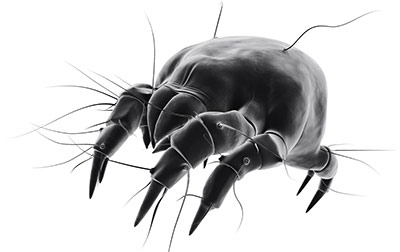Share
Related Topics
Controlling dust mites, like most other home challenges, involves thinking about the whole home. Here are tips to avoid being part-smart:
We do not strictly control Google ad content. If you believe any Google ad is inappropriate, please email us directly here.

- Reduce indoor humidity to 50% or less
- Put allergen covers on mattresses and pillows
- Vacuum daily with a tight unit
- Leave beds unmade initially so they can air out and dry
- Hire an IICRC-certified firm for periodic carpet cleaning and thorough drying (see sidebar below, right).
See also:
HHI Error Correction Policy
HHI is committed to accuracy of content and correcting information that is incomplete or inaccurate. With our broad scope of coverage of healthful indoor environments, and desire to rapidly publish info to benefit the community, mistakes are inevitable. HHI has established an error correction policy to welcome corrections or enhancements to our information. Please help us improve the quality of our content by contacting allen@healthyhouseinstitute.com with corrections or suggestions for improvement. Each contact will receive a respectful reply.
The Healthy House Institute (HHI), a for-profit educational LLC, provides the information on HealthyHouseInstitute.com as a free service to the public. The intent is to disseminate accurate, verified and science-based information on creating healthy home environments.
While an effort is made to ensure the quality of the content and credibility of sources listed on this site, HHI provides no warranty - expressed or implied - and assumes no legal liability for the accuracy, completeness, or usefulness of any information, product or process disclosed on or in conjunction with the site. The views and opinions of the authors or originators expressed herein do not necessarily state or reflect those of HHI: its principals, executives, Board members, advisors or affiliates.








